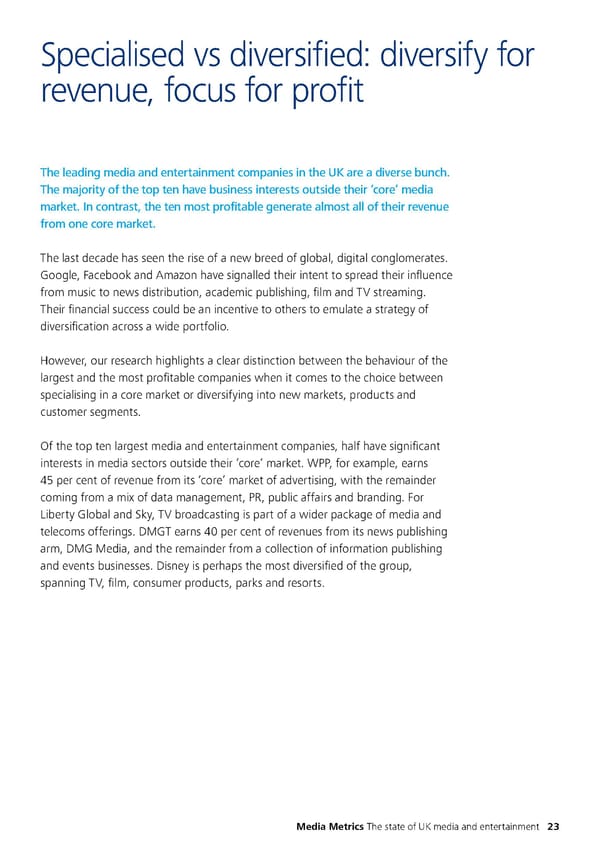To start a new section, hold down the apple+shift keys and click to release this object and type the section title in the box below. Specialised vs diversified: diversify for revenue, focus for profit The leading media and entertainment companies in the UK are a diverse bunch. The majority of the top ten have business interests outside their ‘core’ media market. In contrast, the ten most profitable generate almost all of their revenue from one core market. The last decade has seen the rise of a new breed of global, digital conglomerates. Google, Facebook and Amazon have signalled their intent to spread their influence from music to news distribution, academic publishing, film and TV streaming. Their financial success could be an incentive to others to emulate a strategy of diversification across a wide portfolio. However, our research highlights a clear distinction between the behaviour of the largest and the most profitable companies when it comes to the choice between specialising in a core market or diversifying into new markets, products and customer segments. Of the top ten largest media and entertainment companies, half have significant interests in media sectors outside their ‘core’ market. WPP, for example, earns 45 per cent of revenue from its ‘core’ market of advertising, with the remainder coming from a mix of data management, PR, public affairs and branding. For Liberty Global and Sky, TV broadcasting is part of a wider package of media and telecoms offerings. DMGT earns 40 per cent of revenues from its news publishing arm, DMG Media, and the remainder from a collection of information publishing and events businesses. Disney is perhaps the most diversified of the group, spanning TV, film, consumer products, parks and resorts. Media Metrics The state of UK media and entertainment 23
 Media Metrics Page 31 Page 33
Media Metrics Page 31 Page 33